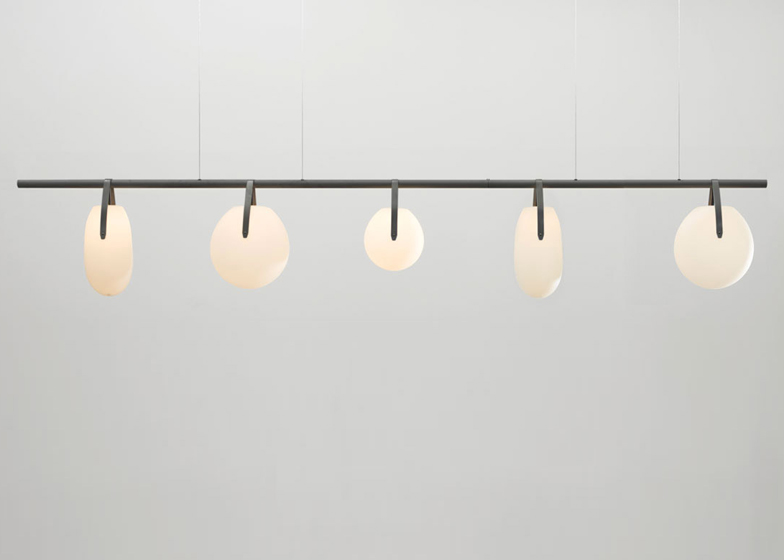Product news: these chandeliers by American lighting designers Rich Brilliant Willing feature glowing blobs of glass that dangle from aluminium rods.
The Gala chandelier was designed by Rich Brilliant Willing with a form taken from nature. "It's like "full, ripe fruit hanging on a branch," says the studio.
The bulbs are hand-blown by a local glass blower, before being hooked over aluminium rods using fixings that look like basket handles.
The rods come in three lengths - 42 inch, 72 inch or 114 inch - and can be combined with a choice of small, large or long bulbs that can be configured in either symmetrical or asymmetrical arrangements along the rod.
Gala chandelier was presented last month at New York Design Week, where Rich Brilliant Willing also launched a wall-mounted bedside lamp that can be swivelled to angle light where it's needed.
Other lamps we've recently published include a set of pendant lamps with raised collars that direct light up to the ceiling as well as down to the floor and a duo of floor lamps that have shades almost identical to their bases. See all our stories about lighting »
Here's a product description from Rich Brilliant Willing:
Full, ripe fruit hanging on a branch. The Gala Chandelier takes its cues from nature (and a RBW favourite snack!), with curvaceous, organic forms that sit alongside or above one another on a strong linear arm. Hand-blown glass bulbs are supported by a sleek aluminium beam, adding warmth and subtle character to any contemporary space.
Gala also conjures a festive celebration and it is this spirit that the warm orbs of light intend to offer. Basket like ‘handles’ connect globes to the beam and discreet powered cables connect the beam to the ceiling.
All RBW products are hand-assembled in the studio and with that as a production backbone, we thought to further explore artisan skills and craft in our 2013 collection. The Gala Chandelier’s most prominent design feature is undoubtedly its glass bulbs and for this, we sourced a local glass blower.
A technique developed in the middle of the last century BC, glassblowing requires a blow pipe and super lung strength. These tools allow molten glass to form into a bubble and from there it can be shaped however the blower sees fit.

